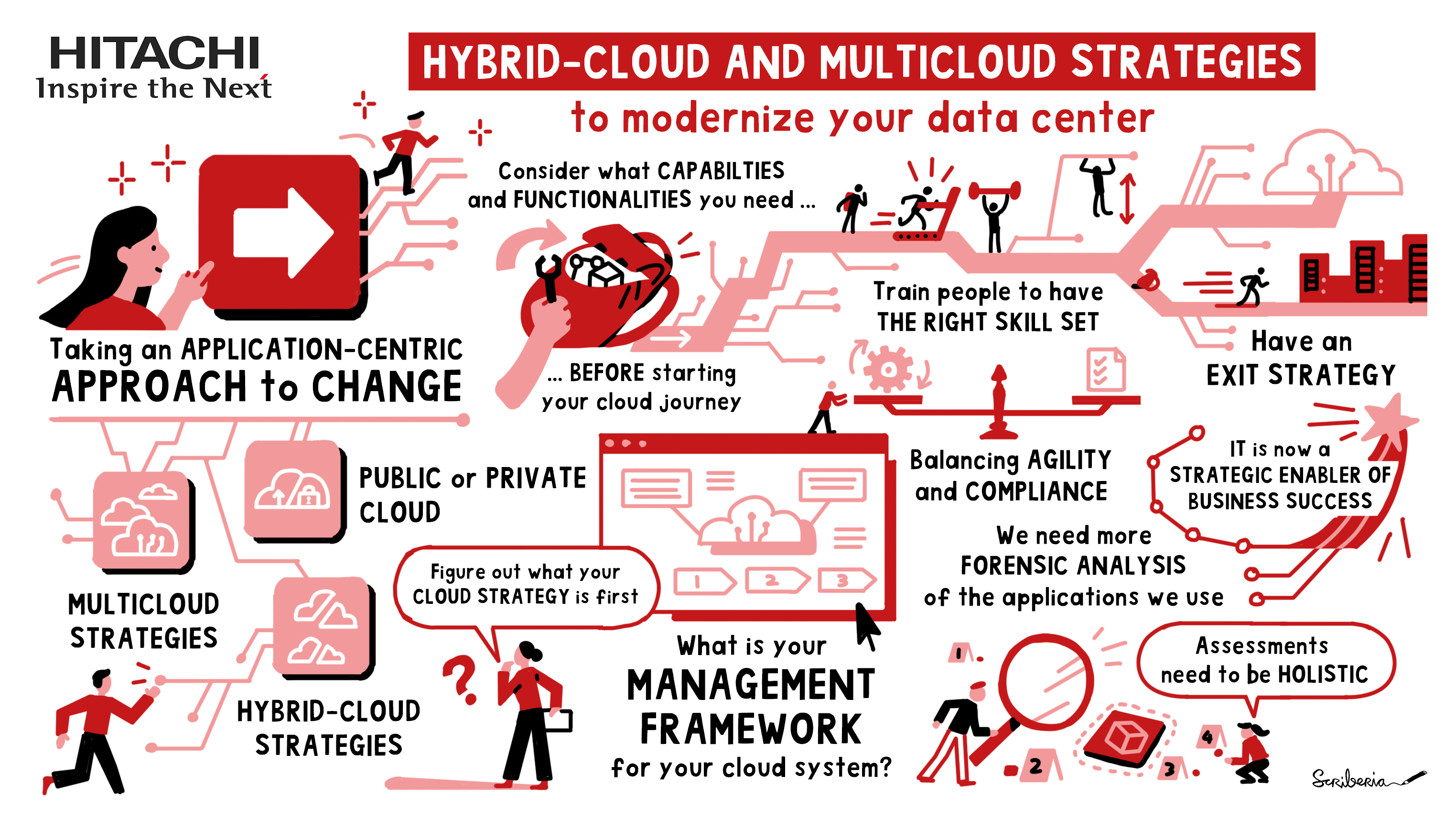The Digital Core Starts with an Application-First Infrastructure


Amid the rapid pace of change felt by organizations this year, it's no surprise that digital transformation projects have been high on the agenda for CIOs across the globe. To achieve both their organizational and transformation goals and become digitally agile as a result, CIOs are often tasked with creating the conditions needed to enable an intelligent and flexible digital core. However, despite the benefits such transformation could bring, there remain various operational complexities and security concerns that could slow or hinder the impact of a cloud-first strategy.
To gain deeper insight into these challenges and uncover ways of developing strategies that equip organizations with the tools they need to navigate a post-COVID-19 landscape, I hosted a virtual roundtable event with a small group of C-level peers. Having reflected on previous conversations I'd had with CIOs and understanding that many organizations are using a mix of public and private cloud, I asked what the panel believed were the top challenges they face when pursuing this cloud-first strategy in such a hybrid-cloud world.
One respondent explained that while the organization has adopted a hybrid-cloud strategy, its standing as a global organization has meant that it is subject to a wide variety of regulation and compliance agreements. Likewise, the issue of costs and skills gaps across IT teams has meant that the organization has approached hybrid cloud as a small, yet considered, digital transformation journey.
This response is consistent with much of the feedback I have received from other organizations: Despite being optimistic about hybrid cloud, they have concerns regarding the security of their data, as well as other organizational complexities. For example, it may seem simple to spin up a resource in a well-known and respected cloud computing service, but to actually migrate data into that service requires some cloud expertise. For this reason, the effort made to upskill teams will play an important role in adopting new technologies successfully and securely.

On the other side of the coin are organizations that have rushed to cloud, taking a lift-and-shift approach to migration. In some European countries, we've started to see that such an approach — which has in many cases been influenced by the ongoing pandemic — often involves a subsequent bounce-back from the cloud to on-premises again. While such bounce-back may be a sign of an organization deciding to migrate prematurely, it's important to remember that a bounce-back doesn't necessarily occur because the public cloud is declining. Rather, when we see around 50% of workloads bouncing back, 14% is often reallocated and 36% remains in a private cloud.
It was made clear during our discussion that organizations should seek an approach to cloud migration that works best for them and their business. For example, one panel speaker explained the decision to undertake an assessment of the organization's lift-and-shift migration into the cloud. Through this assessment, they were able to identify a number of areas that simply could not be lifted and shifted, informing the organization's decision to extend an on-premises data center contract to cater to these areas.
Other organizations have been able to avoid or mitigate these challenges by building a microservices platform. For example, for those processing high volumes of transactions every year, microservices offer an ability to “talk” to several legacy systems as well as third-party systems, enabling them to boost communication and efficiency across these functions. When comparing modern application architecture to the legacy method of creating applications, the former offers an ability to break down monolithic applications to microservices and microservices building blocks. This approach enables users to use and reuse data as many times as they like. Further, because the infrastructure's foundations have already been established, it allows organizations to build the next application at a much faster rate.
The ability to deliver a more simplified app-first infrastructure should not be underestimated, particularly as organizations navigate this stretch of COVID-19 uncertainty. From these roundtable discussions, it's clear that among the ultimate goals for these organizations is an ability to break down organizational silos between application developers, operational teams and security teams; they seek to enable all team members to work more effectively and deliver greater ROI for the organization. In doing so, organizations can also equip themselves with the tools and skill sets needed to deliver applications in a containerized world — which they are accomplishing at a much faster rate than has been possible for them in the past.
When discussing their expectations for the future, the panel's feedback emphasized the need for strategies to be informed and driven by the area of the organization concerned, as some will require changes to occur at a quicker rate than others. In addition, it was clear that strategies that work to improve flexibility and agility prove instrumental in streamlining business-critical processes, such as asset management.
For others, microservices and containers remain a key priority. By moving into the container world, these organizations have been able to gain greater control over the microservice, bringing together developers, operations specialists and security professionals alike with both ease and speed. The pandemic has clearly demonstrated a need for businesses to focus on agility and flexibility as they move forward into an uncertain market. And it's clear from these discussions that CIOs across industries are investing a significant amount of time and energy into getting their app-first infrastructure right.
If you'd like discuss any of the topics raised in this blog post, or would like to learn more about how we could support you in defining a winning strategy for adopting an application-first infrastructure, please do not hesitate to get in touch.

Tom has +30 years' experience in data center modernization, from compute and data infrastructure to hybrid and multicloud, applications, DataOps and big data analytics. He writes extensively about technology and advocates for sustainability and social innovation.